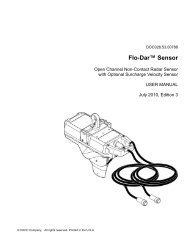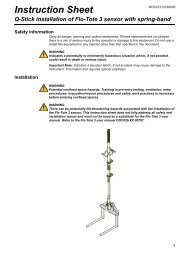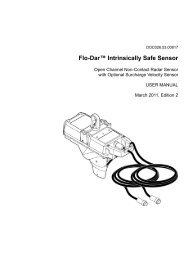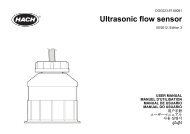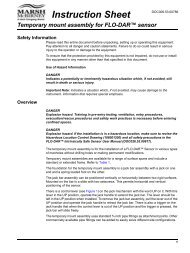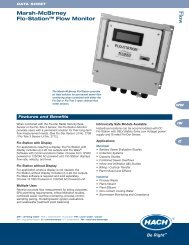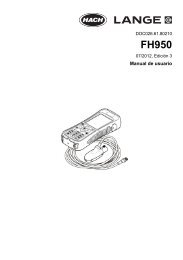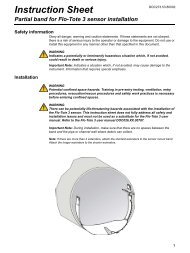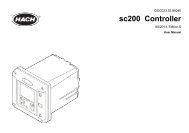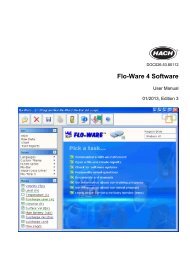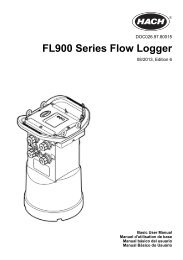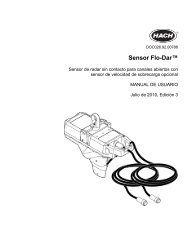FH950 User Manual English - Hachflow
FH950 User Manual English - Hachflow
FH950 User Manual English - Hachflow
You also want an ePaper? Increase the reach of your titles
YUMPU automatically turns print PDFs into web optimized ePapers that Google loves.
Option<br />
Files<br />
Setup<br />
Description<br />
Used to view or delete files.<br />
Used to set up filter parameters and the Maximum depth feature.<br />
3. Select Setup > Maximum depth. Select <strong>Manual</strong> or Automatic.<br />
Option<br />
<strong>Manual</strong><br />
Automatic<br />
Description<br />
In this mode, the instrument prompts the user to manually enter the maximum depth of each<br />
vertical. This value is normally obtained from a wading rod.<br />
In this mode (available only on sensors with the depth option), the instrument uses the pressure<br />
transducer to measure the maximum depth at each vertical.<br />
a. If Automatic is selected, enter the distance from the bottom of the channel to the bottom of the<br />
sensor mount.<br />
b. Put the sensor at the lowest position on the wading rod.<br />
c. Enter the minimum depth (measured from the bottom) that the sensor can read. Refer to<br />
Figure 11.<br />
Figure 11 Minimum depth<br />
4. Select Top or Bottom for the measurement reference then push OK.<br />
5. If necessary, change or update the filter parameters in Profiler Setup.<br />
6. In the Profiler menu, select Stream.<br />
7. Enter a name for the stream profile. Make profile names alpha-numeric with a maximum of<br />
11 characters. Push OK to save the profile name or select Clear to delete all current stream<br />
profile data.<br />
8. Enter the stage reference. This is typically an elevation value from an immovable object such as a<br />
survey marker or bridge, etc.<br />
20 <strong>English</strong>



